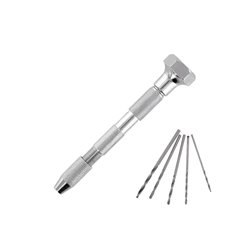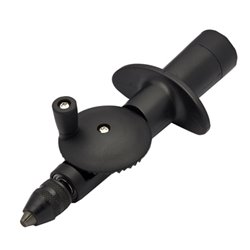Static grass puffer bottles work by manually charging model grass fibres with static electricity. When the charged...
No products
Product successfully added to your shopping cart
There are 0 items in your cart. There is 1 item in your cart.
Search Tips
What different types of hand drills are there?
There are three main types of hand drills used in modelling, all with quite amusing or non-descriptive names including eggbeaters (officially known simply as hand drills or wheel braces), the Archimedean drill, which developed into the push drill and pin vices.
Traditional hand drills (eggbeaters) have a handle you turn to provide rotation to a drill bit via a gear, a push drill also produces a rotating motion but is operated by pumping the handle of the screwdriver-like device up and down as you work and a pin vice has no mechanism therefore is operated by screwing a bit through a surface in an action not too dissimilar to using a bradawl.
Hand operated drills specifically designed for modellers accept very small bits ranging from zero to just a couple of millimetres making them ideal for modelling projects. Although there are numerous other types of hand-operated drills available, these three are the most commonly used by modellers providing them with a means to drill holes with a precision that power tools would not allow.
Click here to receive the tips weekly in your mailbox. You can unsubscribe at any time.










